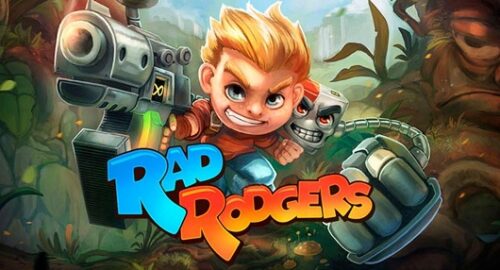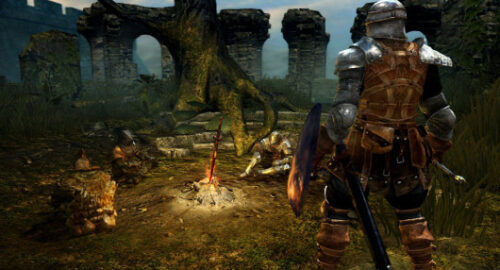Hare and Tortoise was the first winner of the Spiel Des Jahres back in 1979. Step back in time with this family-friendly innovative race game.
• Designer: David Parlett
• Publisher: Gibsons Games
• Number of Players: 2 – 6
• Playing Time: 45 minutes

Back in the 1970’s, the world was board game crazy. Many titles released back in the decade are still household names today: Operation, Mouse Trap, Yahtzee and Hungry Hippos to name but a few. Hare and Tortoise made its debut in 1974 and, while not as well-known as the other games in my list, it hasn’t been out of print since. Although made by British designer David Parlett, the game was a huge hit in Germany (where it was picked up by Ravensburger under the name Hase und Igel) and became the first winner of the Spiel Des Jahres award in 1979. Parlett is still designing games today and went on to become a UK Games Expo Hall of Famer in 2013. Now, Hare and Tortoise has been picked up by Gibsons Games in the UK and is enjoying a reprint in garish orange and black colours that look like they have been lifted straight from history.
The question for this review is: “Does Hare and Tortoise stack up against games today?” The game is a retelling of Aesop’s well-known fable, with the players racing against each other to be the first across the finish line. The twist in this game is that it eliminates dice rolling completely. While this may not be a major innovation today, consider what the world was like in 1974. Games such as Cluedo, 221B Baker Street, Escape from Colditz and Haunted House all feature a basic roll-and-move mechanic. The entire course of the game for a player can be dictated entirely by luck. Hare and Tortoise does away with this altogether because how far you move is entirely down to you.

Movement is governed by the use of Carrot cards. Starting with 65 carrots, players shell out a number of cards according to a reference table; the further you move, the more carrots you have to exponentially shell out. Moving only one space will cost you 1 carrot, but to move two spaces will cost 3. Three spaces will cost 6, four spaces 10 and so on. This means that “slow and steady”, as is the moral of the underlying story, will likely win the race, but bursts of speed are also possible. Each turn a player is challenged to either try and keep up with their opponents, maybe paying out carrots they don’t want to, sticking to a “slow & steady” pace at the risk of falling behind, or making a quick breakaway. Carrots can be acquired by either landing on certain numbered spaces, which force a player to make a prediction of their position in the race next turn with carrots only being awarded if they are correct, or by staying in a vegetable patch and accumulating them more slowly. They can also be acquired by choosing to move backwards onto the tortoise squares, which give bigger rewards the further you move back.
To add a further tactical twist to the game, each player also starts with three lettuce cards which have to be got rid of in order to cross the finish line, representing the Hare’s actions in Aesop’s fable. Landing on a lettuce space is a time-consuming process, so when you choose to go there is a matter of strategy. Do you try and offload your lettuce early in the race at the risk of going behind? Or do you wait until the end, but risk being overtaken towards the finish line by the others? There is also one final tactical sting in the tail. In order to cross the finish line first, you must have under 10 carrots in your hand to do so, meaning a player must finely judge their last few moves to make sure they move quickly, but not so fast that they run out of carrots, nor so slowly that they have too many at the end.

The only element of luck in the game is the use of Hare squares. If a player lands on a hare, they take a card and have something happen to them. Most of these are negative results, but a few can be game-changers, such as refilling back up to 60 carrots or stealing from other players. I felt they added little to the game and after a few play-throughs, I made sure I only ever went to the Hare cards when I had nothing to lose by doing so.
After several play-throughs with groups of differing ages and sizes, the game sadly received generally muted responses. Players were more interested in the history behind the game than the game itself, although my 6 year-old daughter enthusiastically requested more plays; perhaps she is more the target audience for this these days. I found the game to be very tactical and really enjoyed it. It can be quite a challenge to stick to a strategy when others pull ahead, and it is very satisfying stringing other people along when you make a breakaway. The constant decision-making, whether to react or to stick to your plan, makes the game a very interesting contest. Since all players start with identical hands and with luck not being a factor it is more akin to a game of chess. I have to confess, after playing this game 8 times (according to my BG Stats App) I have yet to lose a round of it. Something about Hare and Tortoise just clicks for me.

Realistically, Hare and Tortoise isn’t going to be the centrepiece of many gamers’ collections. It’s a slice of history that had a major innovation when it was released, but its overall depth is no greater than the classic MB and Waddingtons-type games of the 1970’s. It belongs in a family game collection with the others and, to answer my earlier question, it can sit comfortably among those games. Amazingly, there is still an annual world championship for Hare and Tortoise at the Mind Games Olympiad where it enjoys a following among mathematicians, but its main audience is much younger than that. Eliminating dice-rolling may be seen as standard these days, especially among Eurogames, but Hare and Tortoise did it first and won the inaugural Spiel Des Jahres for doing so in 1979. For that, it deserves credit and a touch of respect from gamers today.
Hare and Tortoise was an innovative game in its day. It stands well with other family board games of the 1970’s that are still in print and paved the way for other games with the Spiel Des Jahres award in 1979. It isn’t fair to judge it in comparison to other winners since, because it’s a product of its time and compared to them, it holds up just as well. The game allows for a wide range of strategies to win, with all players having an equal chance at the beginning. It’s fast, easy to understand and makes for a great board game for children.





